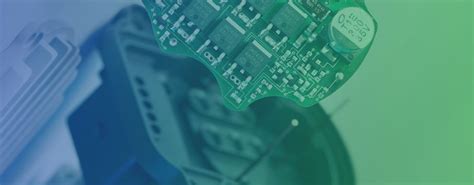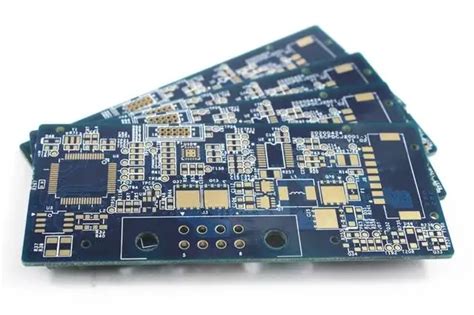Essential Guide to PCB Fab Services for Effective Prototyping
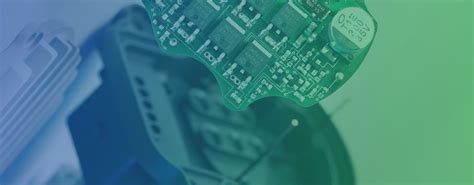
Key Takeaways
When navigating the world of PCB fab services, it is crucial to understand the foundational elements that contribute to successful production and prototyping. By grasping the intricacies of pcb manufacturing, you equip yourself with the knowledge necessary to make informed decisions. Many pcb manufacturing companies offer various services, each designed to cater to different project needs. This diversity can significantly affect your pcb manufacturing cost, so carefully analyze the options available.
In your journey, consider focusing your attention on selecting a service that aligns with your project specifications and budget constraints. A well-structured approach not only helps streamline the production process but also enhances communication with manufacturers, which is vital for ensuring quality outcomes. Keep in mind that clarity during design stages can dramatically impact both efficiency and turnaround time.
"Investing time in the design stage pays off in reduced costs and expedited prototyping."
Utilizing advanced technologies can lead to innovative solutions in your pcb manufacturing business. As you delve deeper into different methods, don’t hesitate to engage with manufacturers directly; their insights can provide valuable perspectives on industry standards and emerging trends.
Here’s a quick overview of key points when considering PCB fab services:
| Aspect | Considerations |
|---|---|
| Design Precision | Impact on production quality |
| Material Selection | Influence on cost and durability |
| Technological Capabilities | Availability of advanced fabrication methods |
| Support Services | Assistance during prototyping stages |
With these takeaways in mind, you’re better positioned to navigate the complexities of PCB fabrication while maximizing effectiveness in prototype development. For further resources and services, visit Andwin PCBA for a comprehensive overview of what they offer.
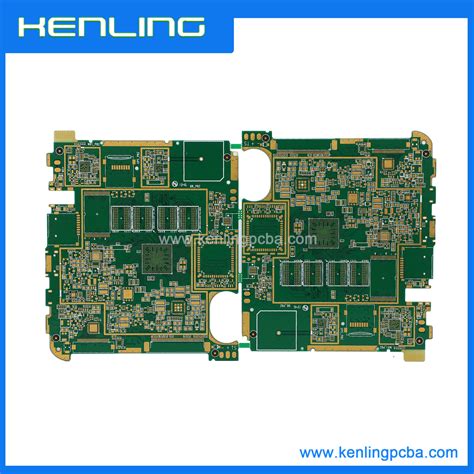
Introduction to PCB Fab Services: What You Need to Know
In today’s fast-paced technology landscape, understanding PCB fab services is essential for anyone involved in electronics design and prototyping. These services are at the core of the PCB manufacturing process, transforming your innovative ideas into tangible products. When you delve into the realm of PCB manufacturing, you will encounter various pcb manufacturing companies that cater to different needs, ranging from hobbyist projects to industry-scale production. Familiarizing yourself with these services allows you to determine the right fit for your projects while keeping an eye on pcb manufacturing costs. It’s important to remember that optimizing your design for manufacturability can lead to significant cost savings and faster turnaround times.
Selecting a reliable pcb manufacturing business is crucial, as not all companies offer the same capabilities or quality standards. By understanding the key processes involved in PCB fabrication — such as etching, layering, and finishing — you can make informed decisions that will impact the efficiency and reliability of your prototypes. Moreover, embracing effective prototyping strategies early on will not only expedite your project timelines but also enhance the overall success of your electronic products. Therefore, investing time in learning about PCB fab services equips you with knowledge that empowers you to take your designs from concept to reality efficiently and effectively.

Key Processes in PCB Fabrication
Understanding the key processes in PCB fabrication is crucial for achieving successful prototypes. The PCB manufacturing process typically involves several stages, beginning with design and layout using computer-aided design (CAD) tools. After the design is finalized, the next step is the creation of a photomask, which allows for the precise transfer of your design onto a substrate. Once the layout is transferred, etching occurs, where unwanted copper is removed to form the circuit pathways.
Following etching, the processes of drilling and plating are executed. This is where holes are drilled into the board for components and connections, leading to an electroplating process that ensures electrical connectivity through these drilled holes. The quality of these processes directly influences both functionality and reliability in your prototypes.
Next comes solder mask application, which protects copper traces from oxidation and prevents solder bridges during assembly. This step is followed by silkscreen printing, which labels components on your PCB for easier assembly.
Throughout each stage of your PCB manufacturing business, it’s essential to monitor quality assurance—inspections and testing ensure that your boards meet required specifications before they proceed to assembly. By grasping these crucial steps in PCB fabrication, you can make more informed decisions when collaborating with various PCB manufacturing companies, ultimately optimizing pcb manufacturing costs and enhancing prototype turnaround times. This knowledge enables you to streamline your prototyping process effectively while maintaining high standards in quality and performance.
Selecting the Right PCB Fab Service for Your Needs
When it comes to pcb manufacturing, choosing the right PCB fab service is crucial for achieving high-quality prototypes that meet your design specifications. Start by evaluating your project requirements, such as the complexity of the circuit board, the number of layers, and specific materials needed. Different pcb manufacturing companies specialize in various aspects of fabrication, which can influence your decision significantly.
You should also consider the pcb manufacturing cost associated with each service. Some providers may offer lower prices but could compromise on quality or turnaround time. It’s essential to balance your budget with your need for reliability and efficiency. Look for manufacturers that provide transparent pricing structures and detailed quotations; this will help you avoid unexpected costs later in the project.
Moreover, consider their production capabilities and expertise in specific technologies. Some pcb manufacturing businesses might excel in rapid prototyping, while others might be better suited for high-volume production runs. Take the time to review their portfolios or seek out customer testimonials to get an idea of their competence in handling projects similar to yours.
By carefully assessing these factors, you will be better positioned to select a PCB fab service that aligns with your design goals and production needs, ensuring a smooth prototyping process that paves the way for successful product development.
Designing for Effective Prototyping: Best Practices
When you embark on the journey of PCB prototyping, understanding best practices is crucial for success. Start by clearly defining your project’s requirements; this includes understanding the purpose of your design and identifying key specifications such as size, layer count, and functionality. Collaborate closely with pcb manufacturing companies to ensure that your designs align with technical capabilities and production constraints. Consider utilizing standardized components where possible, as this can significantly minimize pcb manufacturing cost while simplifying assembly and enhancing reliability.
Additionally, pay attention to layout optimization. This involves strategically placing components to minimize trace lengths and avoid unnecessary complexity in your circuit board design. Thoroughly reviewing your designs prior to submission can prevent costly revisions later on in the production process. You should also utilize simulation tools to test circuit behavior before prototyping; this not only saves time but enhances the accuracy of your final product.
Engaging with a reputable pcb manufacturing business that specializes in rapid prototyping will allow you to take advantage of advanced fabrication techniques. These techniques can lead to faster turnaround times while maintaining high-quality standards. Remember, an effective prototype is not just a proof of concept; it should also be easily adaptable for future iterations. By adhering to these best practices, you can greatly enhance the effectiveness of your PCB prototypes and streamline the overall fabrication process.

Exploring Different PCB Fabrication Technologies
When it comes to PCB manufacturing, understanding the various fabrication technologies available is crucial for your prototyping success. The landscape of PCB manufacturing companies is diverse, offering a range of techniques that can significantly impact the performance and cost of your designs. Traditional methods such as through-hole technology remain popular for certain applications, while advancements in surface mount technology (SMT) provide enhanced capabilities for compact and efficient board layouts. You may also encounter emerging methodologies like flexible PCB fabrication, which offers versatility in design, making it ideal for devices requiring bending or folding. It’s important to evaluate the PCB manufacturing cost associated with each technology to ensure it aligns with your budget without compromising quality. Additionally, specialized techniques such as additive PCB manufacturing can facilitate complex designs and potentially faster production times. By exploring these different fabrication technologies, you can make informed choices that optimize the efficiency and effectiveness of your PCB manufacturing business, ultimately leading to successful prototypes that meet your project’s specific requirements.
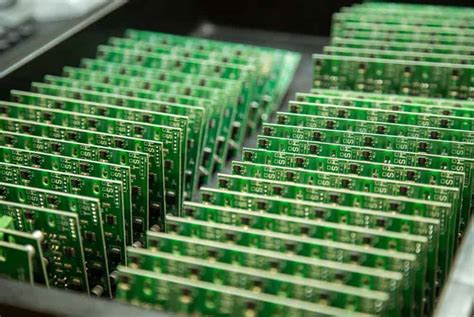
Cost Considerations in PCB Prototyping
When engaging in PCB manufacturing, understanding the various factors that influence pcb manufacturing cost is crucial for achieving a successful outcome in your prototyping efforts. The costs associated with pcb manufacturing can vary significantly depending on several key considerations, such as the complexity of your design, the materials used, and the specific pcb manufacturing companies you choose to partner with. It is essential to evaluate how intricate your design is, as more complex layouts often entail a higher production cost due to longer fabrication times and additional processing steps.
Moreover, selecting the right materials can also impact the overall expense. High-performance materials may increase initial costs but can lead to better reliability and longevity of your prototype. Additionally, factors such as batch size play a significant role; for small production runs, prices per unit may be higher compared to bulk orders.
It’s also wise to conduct thorough research on various pcb manufacturing businesses to determine their pricing structures and service offerings. Some companies may provide competitive pricing based on their production capacity or specialized services. Engaging in dialogue with these companies about any specific needs or constraints you may have can lead to more tailored solutions that align with your project budget.
Ultimately, balancing quality with cost is key as you navigate through the pcb manufacturing process, ensuring that your prototypes are both effective and economically viable while minimizing unnecessary expenditures along the way.
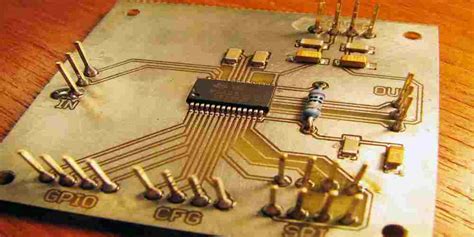
Rapid Prototyping Techniques and Their Benefits
When embarking on pcb manufacturing, utilizing efficient rapid prototyping techniques is crucial for your design process. You will find that these techniques not only accelerate the development timeline but also significantly lower the overall pcb manufacturing cost. By employing methods such as 3D printing, CNC machining, and laser cutting, you can quickly transform your design concepts into physical products. This speed allows for immediate testing and iterations, giving you the flexibility to make adjustments based on real-world performance rather than theoretical evaluation alone.
Moreover, engaging with established pcb manufacturing companies that specialize in rapid prototyping can provide you with valuable insights into best practices and innovative processes. This collaboration enables you to understand potential pitfalls and optimize your designs effectively before committing to full-scale production. As a result, not only do you save time and resources, but you also enhance the overall quality of your final product.
Implementing rapid prototyping within your pcb manufacturing business model fosters a culture of innovation. It encourages brainstorming through multiple iterations that refine products based on feedback obtained during testing phases. Ultimately, adopting these techniques can elevate your project’s success rate while ensuring that your end-users receive quality circuit boards that meet their specifications and needs effectively.
Conclusion: Streamlining Your PCB Production Process
In today’s fast-paced technological landscape, understanding how to streamline your PCB manufacturing process is crucial for ensuring the timely delivery of high-quality electronic products. When you consider the various PCB manufacturing companies available, it becomes essential to evaluate their capabilities thoroughly. Look for companies that not only offer competitive pcb manufacturing costs but also demonstrate a strong commitment to quality and reliability. Emphasizing clear communication with your selected pcb manufacturing business can help align your design requirements with their production capabilities, thus mitigating potential delays. Additionally, by implementing best practices in designing for effective prototyping, you can expedite your project and reduce costs significantly. Stay informed about emerging technologies in the PCB manufacturing industry, as they can provide innovative solutions that further enhance the efficiency of your prototypes. By focusing on these elements, you will create a smoother workflow from design to production, ultimately leading to better outcomes for your projects.
Conclusion: Streamlining Your PCB Production Process
In the realm of PCB manufacturing, selecting the right PCB fab service is critical to the success of your projects. By understanding the intricacies of various pcb manufacturing companies, you can better navigate cost implications associated with pcb manufacturing costs while ensuring quality output. It’s essential to communicate your design requirements effectively, as this plays a significant role in streamlining your production process. Moreover, knowing which services offer rapid prototyping solutions can provide a competitive edge, allowing you to bring your innovations to market faster. Whether you’re just starting in the pcb manufacturing business or looking to enhance your current processes, staying informed about industry standards and advancements in technology will ensure that you leverage the best available resources for efficient and effective prototyping. Embrace these strategies, and you’ll be well on your way to optimizing your PCB production efforts.
FAQs
What is PCB fabrication?
PCB fabrication refers to the processes involved in manufacturing printed circuit boards (PCBs) based on specified designs. This service is crucial for creating prototypes and finished products in various electronic applications.
How do I choose the right PCB manufacturing company?
Selecting the right PCB manufacturing company requires assessing their experience, technology, quality assurance processes, and customer support. It’s vital to research and compare different providers to ensure they meet your specific requirements.
What factors influence PCB manufacturing costs?
Several factors impact PCB manufacturing cost, including material choice, board complexity, layer count, and production volume. Additionally, any customizations or special processes will also affect pricing.
Can I get rapid prototypes through PCB manufacturing services?
Yes, many PCB manufacturing businesses offer rapid prototyping services that allow you to quickly turn your design into a physical board. This process is beneficial for testing and validating designs before full-scale production.
What technologies are used in PCB fabrication?
Common technologies used in PCB manufacturing include subtractive methods like etching, additive methods like printing circuits directly onto substrates, and other advanced techniques that enhance the efficiency and precision of production.
For more information on selecting a suitable service for your needs or to access quality options, ### please click here.

